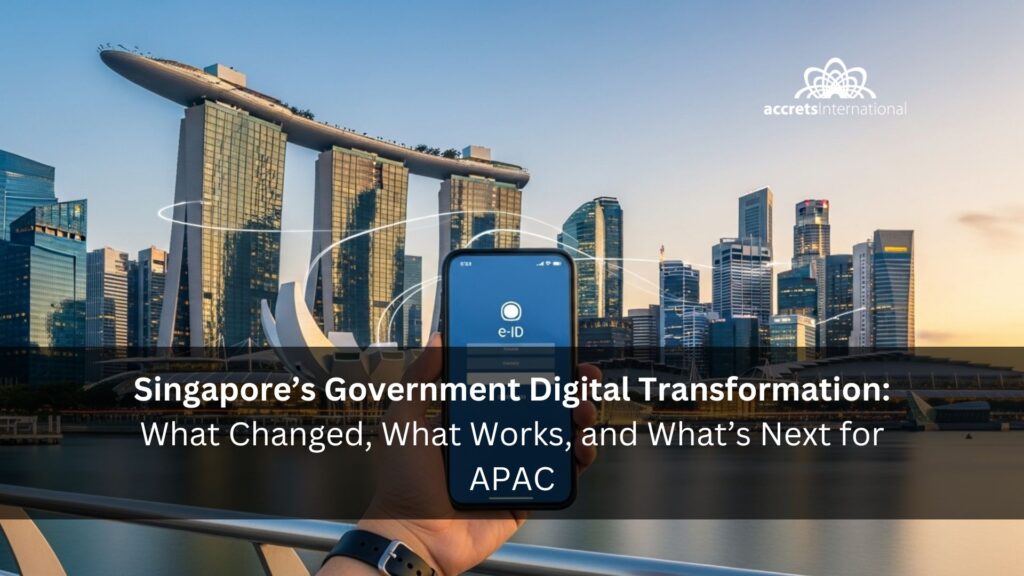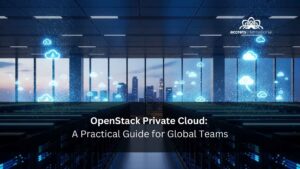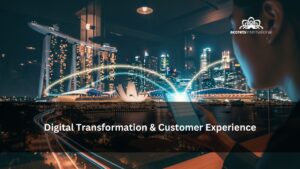If you are searching for a clear, up to date view of Singapore government digital transformation, this article gives you the essentials in one place. We summarise the governance model, showcase real services like Singpass, LifeSG, GovWallet, APEX and ODP, connect the dots to 5G and green data centres, and explain the APAC angle through DEFA and ASEAN initiatives.
Read with us until the end so you can see what changed in 2024 to 2025, why the model works, and how agencies and enterprises can apply the same patterns.
Updated: October 2025 (SGT)
Table of Contents
ToggleExecutive brief, the 2024 to 2025 inflection point
If you have sensed public digital services moving from good to quietly world class, you are not imagining it. Smart Nation 2.0 sharpened the national focus around three goals, Trust, Growth and Community, and aligned agencies on outcomes citizens can feel every day. On 8 July 2024, the Ministry of Communications and Information formally became the Ministry of Digital Development and Information, a stronger mandate for digital policy and transformation.
On the infrastructure side, Singapore reached about 95 percent nationwide outdoor 5G standalone coverage by end 2022, and the Green Data Centre Roadmap announced in May 2024 is unlocking at least 300 MW of energy efficient compute capacity with more tied to future green energy. These moves underpin the next wave of citizen facing services, data sharing and AI enabled productivity across the public service.
The engine room, who does what and why it works
Singapore’s model works because roles are crisp and coordinated:
- MDDI sets national digital strategy and policy and leads international digital cooperation.
- GovTech builds and operates common platforms and products such as Singpass, APEX and ODP, and convenes global knowledge sharing through DGX.
- IMDA steers digital economy policy, connectivity and spectrum, including 5G SA, and data centre sustainability.
- CSA leads cybersecurity strategy and regional cooperation, including the ASEAN Regional CERT and the ACID drills.
- PDPC governs data protection and publishes practical AI governance toolkits, with Singapore helping to shape ASEAN level guidance.
For agencies that need additional horsepower to execute, infrastructure outsourcing remains a pragmatic lever. Done well, it complements internal capability and accelerates timelines, especially for mid sized builds that do not justify full in house teams. A practical overview of options is available in this guide to infrastructure IT outsourcing in Singapore.
From policy to services, Case 1, National Digital Identity with Singpass and LifeSG
Singpass is now the passport to government online, serving more than five million users with over 41 million transactions a month across more than 2,700 services. It supports secure login, biometrics or 2FA, digital signing and form pre fill to reduce friction. LifeSG complements this by bundling hundreds of services around moments of life, from registering a birth to planning for retirement, so citizens do not have to navigate multiple agencies.
Why it matters: identity combined with service orchestration saves time and reduces errors. If you are building business side integrations that must survive outages and audits, pair identity with robust continuity patterns. Many teams start by hardening backup and disaster recovery designs using a plain English primer on cloud backup and DR options in Singapore and ensuring business IT support is aligned to SLAs, as outlined in this IT support field guide for Singapore.
From policy to services, Case 2, Government payouts at scale with GovWallet
GovWallet digitises disbursements and integrates with rails people already use. It serves well over a million users with merchant acceptance through PayNow and NETS, and ties into Singpass and LifeSG for identity and service flows. For citizens the experience is simpler and faster. For the state, it is cheaper and more transparent than printing vouchers or issuing cheques.
Trust by design: payout systems need hardened controls, fraud analytics, entitlement checks and secure messaging. If you are engineering a similar pattern in a regulated environment, bolster the blueprint with periodic threat modelling and external reviews. Many teams in Southeast Asia lean on specialist partners for calibration of the control stack to local norms and sector rules, as discussed in this overview of cloud security consulting in Southeast Asia.
From policy to platforms, Case 3, The Open Digital Platform at Punggol Digital District
The Open Digital Platform functions like a smart district operating system. It is next generation middleware that plugs into building and operational technology, fuses data streams and presents a digital twin so operators and developers can experiment safely. Co developed by GovTech and JTC for Punggol Digital District, ODP underpins energy optimisation, facilities management and future campus level services while acting as a living lab for innovators.
Hybrid by default: districts bridge the physical and digital, so workloads often span on premises sensors, edge compute and cloud analytics. If you are designing for this reality, evaluate hybrid architectures that preserve data locality while tapping elastic compute where it makes sense. A practical primer on patterns is here, hybrid cloud providers in Singapore.
Data and APIs, APEX as the circulatory system
Behind the scenes, APEX is the government’s API exchange, the single, secure hub where agencies publish, discover and consume services. Its footprint continues to grow across agencies and private partners, which reduces duplication and encourages reuse. This is the quiet force multiplier for digital government because every new service can stand on what already exists instead of rebuilding.
If you are integrating with government APIs, design for interoperability and varied cloud environments. Enterprise architects often rely on proven patterns for inter cloud interoperability to avoid brittle point to point couplings, as explained in this guide to inter cloud services interoperability. On the human side, onboarding is smoother when collaboration tooling supports the way your teams actually work. Many programs pair rollouts with change enablement using online collaboration tools and enterprise email and Office 365.
Connectivity and compute, 5G standalone plus greener data centres
Two big pillars make the above possible:
- 5G SA: nationwide outdoor coverage reached roughly 95 percent by end 2022, enabling resilient IoT, lower latency operations and new public safety use cases.
- Green Data Centre Roadmap: at least 300 MW of additional capacity is unlocking through tighter efficiency standards and pathways to green energy, with more growth tied to future low carbon sources.
If you are shaping your hosting strategy, map workloads to data centre tiers that match uptime and cost targets. Many Singapore builds standardise on Tier 3 for steady state enterprise apps and earmark Tier 4 patterns for mission critical platforms. A helpful refresher is here, Tier 3 data centre and Tier 4 data centre. For regional workloads, see practical guidance on when US teams choose Singapore for data centres to balance latency, compliance and cost, and a Singapore VPS buyer’s guide for smaller footprints in this VPS field guide.
The regional lens, how Singapore shapes APAC rules of the road
Singapore’s influence goes beyond its borders:
- ASEAN Digital Economy Framework Agreement: negotiations launched in 2023 with a target to substantially conclude by 2025 so that data flows, digital trade and emerging tech have clearer rules.
- ASEAN AI governance: the 2024 ASEAN Guide on AI Governance and Ethics set shared principles and the expanded 2025 guide added practical GenAI policy considerations.
- ASEAN Regional CERT: Singapore is funding and hosting the regional CERT and continues to run the ASEAN CERT Incident Drill to strengthen joint response.
- DGX, Digital Government Exchange: hosted annually in Singapore to convene CIOs and digital leaders to share what works and what does not.
This combination of rules and rails lowers compliance ambiguity and lets governments and businesses exchange lessons quickly.
Inclusion, localisation and accessibility by design
Citizen centric design is a feature, not a slogan. LifeSG bundles services for moments of life, and both online and offline channels remain available so seniors and vulnerable users are not left behind. Public communications emphasise clarity and plain language, and the app’s growth shows demand for consolidated, low friction access.
For enterprises that want to mirror these principles, capacity planning and infrastructure choices matter. Teams with large frontline workforces often revisit their network, device and app portfolios after mapping real user journeys. A useful starting point is this blueprint for corporate IT infrastructure in Singapore together with a practical guide to IT infrastructure capacity planning.
Guardrails for trust, AI governance, security and accountability
Singapore’s AI stance blends optimism with clear rules. The Model AI Governance Framework offers implementable guidance to industry, and ASEAN’s 2024 and 2025 guides provide regional principles and GenAI focused additions. Policymakers continue to advocate for interoperable international AI norms, while public sector platforms such as AIBots let officers build retrieval augmented chatbots on government data under appropriate safeguards.
On the engineering side, modernisation is an opportunity to re baseline stacks for governance and portability. Many teams are reassessing legacy virtualisation footprints and studying vendor neutral alternatives, as outlined in this practitioner’s view on VMware alternatives. It also helps to clarify operating models in the AI era by distinguishing managed services from cloud services, covered in this note on governance in 2025 and a related perspective on why partnering with a managed cloud services provider matters in 2025.
How to get started, a practical playbook for agencies and enterprises
Here is a pragmatic, Singapore tested sequence you can adapt.
1) Discover and design around APIs
Start with your data map. Use public APEX catalogues to discover what exists, then design your services around stable interfaces rather than bespoke integrations.
2) Pilot in cloud sandboxes and productionise with IaC
Prove the path with a thin, valuable slice. Memorialise infrastructure with templates so changes are auditable. If you are choosing a compute model, these short primers help, advantages of IaaS, PaaS vs IaaS, IaC vs IaaS, and a list of IaaS vendors.
3) Harden security early and align with PDPA and AI norms
Bake in identity, logging, secrets rotation and data minimisation. If your workloads straddle public and private environments, plan dependencies up front with on premises private cloud and cloud DR as a Service.
4) Operate with visibility and iterate with product thinking
Treat public services like products. Track completion rates, time to serve and abandonment. For day 2 operations, many teams lean on a managed cloud services provider to keep SLAs honest and cost curves sane.
Methods sidebar, how we calculate time saved
When we estimate service time gains, we use the simple relationship, time saved equals the number of completed transactions multiplied by a baseline minutes per transaction minus the same number multiplied by the new minutes per transaction.
Baselines come from pre digitisation service manuals, Freedom of Information data where available, or published product statistics such as Singpass monthly transactions and LifeSG service counts. We triangulate official sources first, then add neutral third party corroboration.
What is next, a 12 month outlook to watch
- DEFA: continued progress in 2025 toward substantial conclusion, with implications for cross border data, payments and AI.
- Regional cybersecurity: continued ASEAN CERT Incident Drills and resourcing for the ASEAN Regional CERT in Singapore.
- Smart Nation 2.0 programs: deeper pushes on Community and Trust, anticipatory services, accessibility and safe GenAI in the public service.
- Green compute and connectivity: follow on capacity allocations under the Green Data Centre Roadmap and targeted 5G pilots for industrial use cases.
For regulated sectors such as finance, these shifts intersect with sector specific rules. If you are scoping migrations, this primer on cloud banking solutions in Singapore and Southeast Asia offers a checklist for risk and compliance. Public agencies modernising within the commercial cloud can also revisit Government on Commercial Cloud expectations to keep guardrails aligned, see this explainer on GCC in Singapore.
Conclusion
In 2025, Singapore’s model is clear, policy to platforms to services to measurable outcomes, with regional rule making that reduces friction for everyone.
If you are planning your own roadmap for Singapore government digital transformation and want a senior second opinion on architecture, data and delivery, you can fill the form here for a free consultation with an Accrets Cloud Expert on singapore government digital transformation. We will meet you where you are, strategy, implementation or day 2 operations, and help you move faster with less risk.
Dandy Pradana is an Digital Marketer and tech enthusiast focused on driving digital growth through smart infrastructure and automation. Aligned with Accrets’ mission, he bridges marketing strategy and cloud technology to help businesses scale securely and efficiently.




